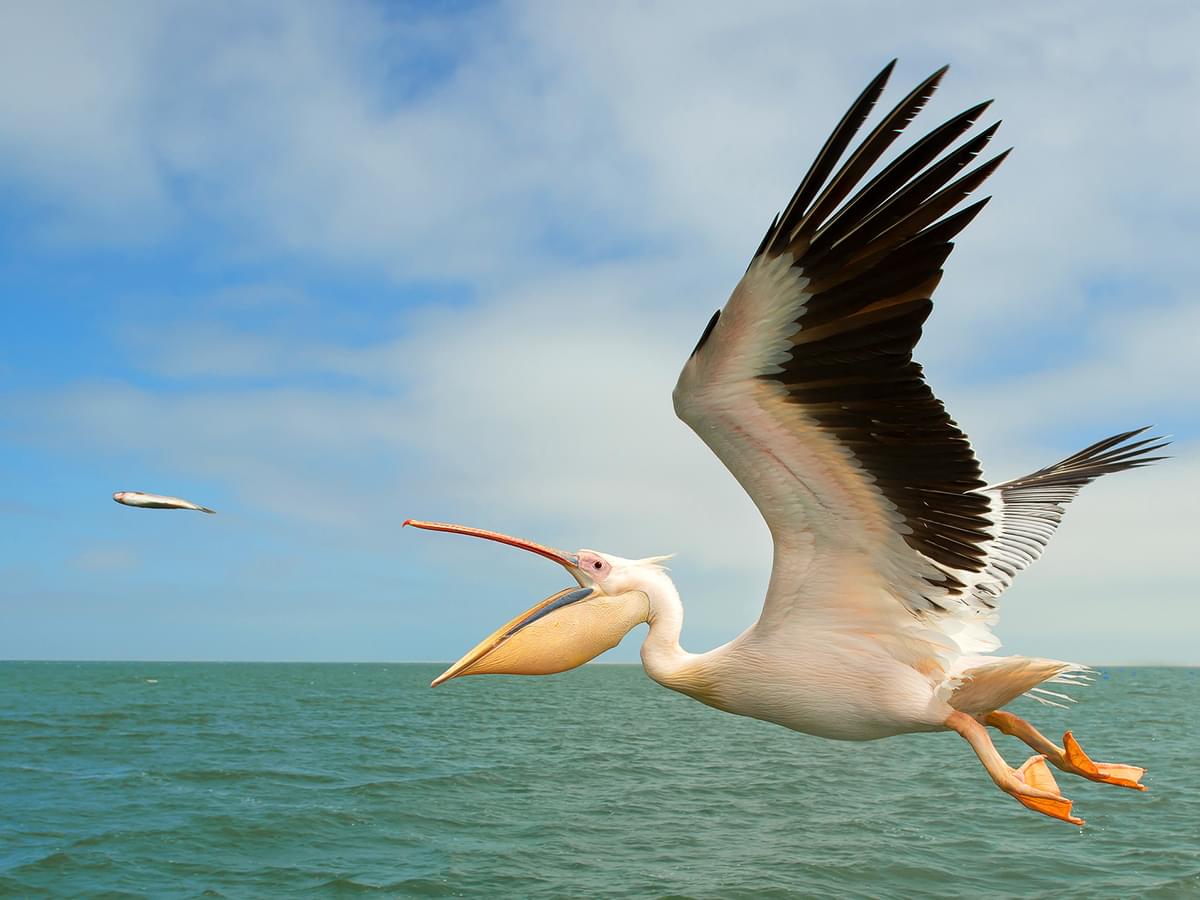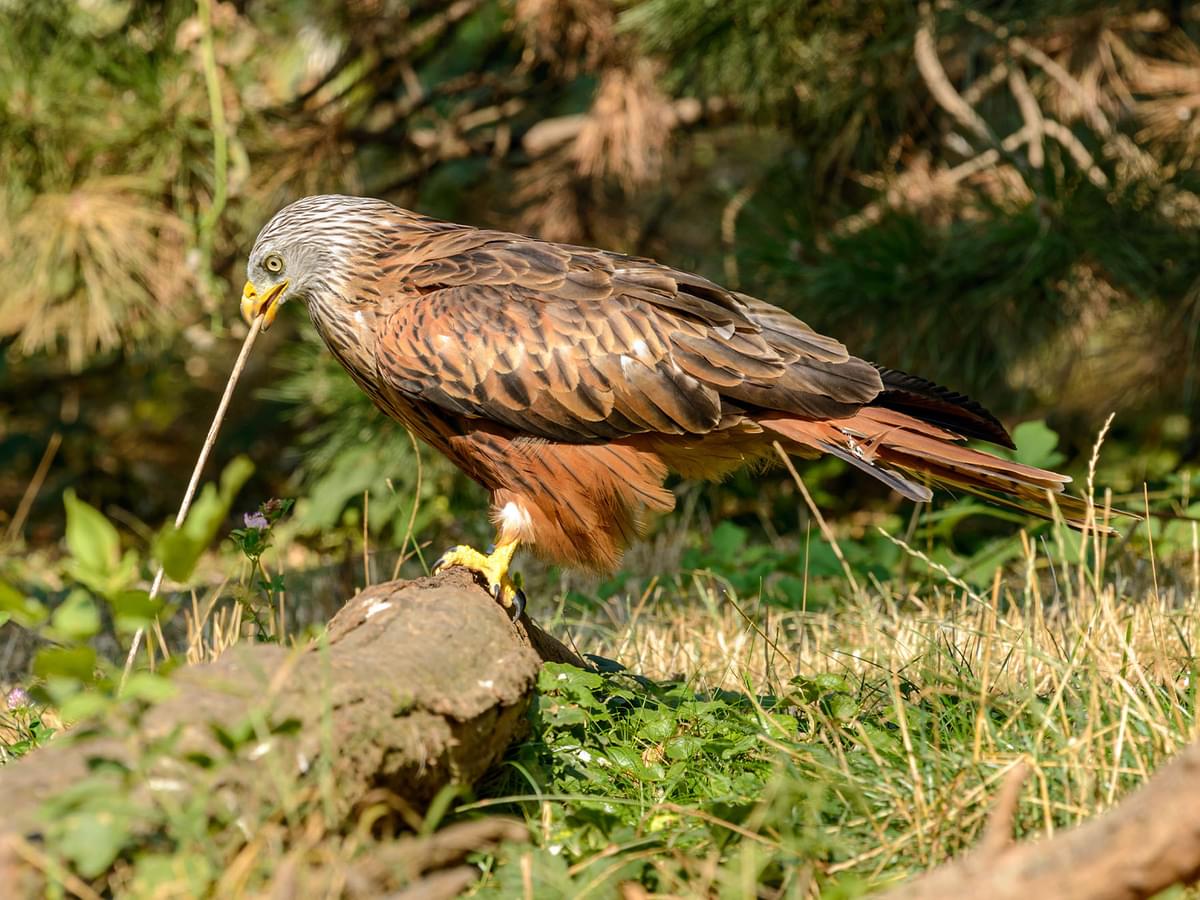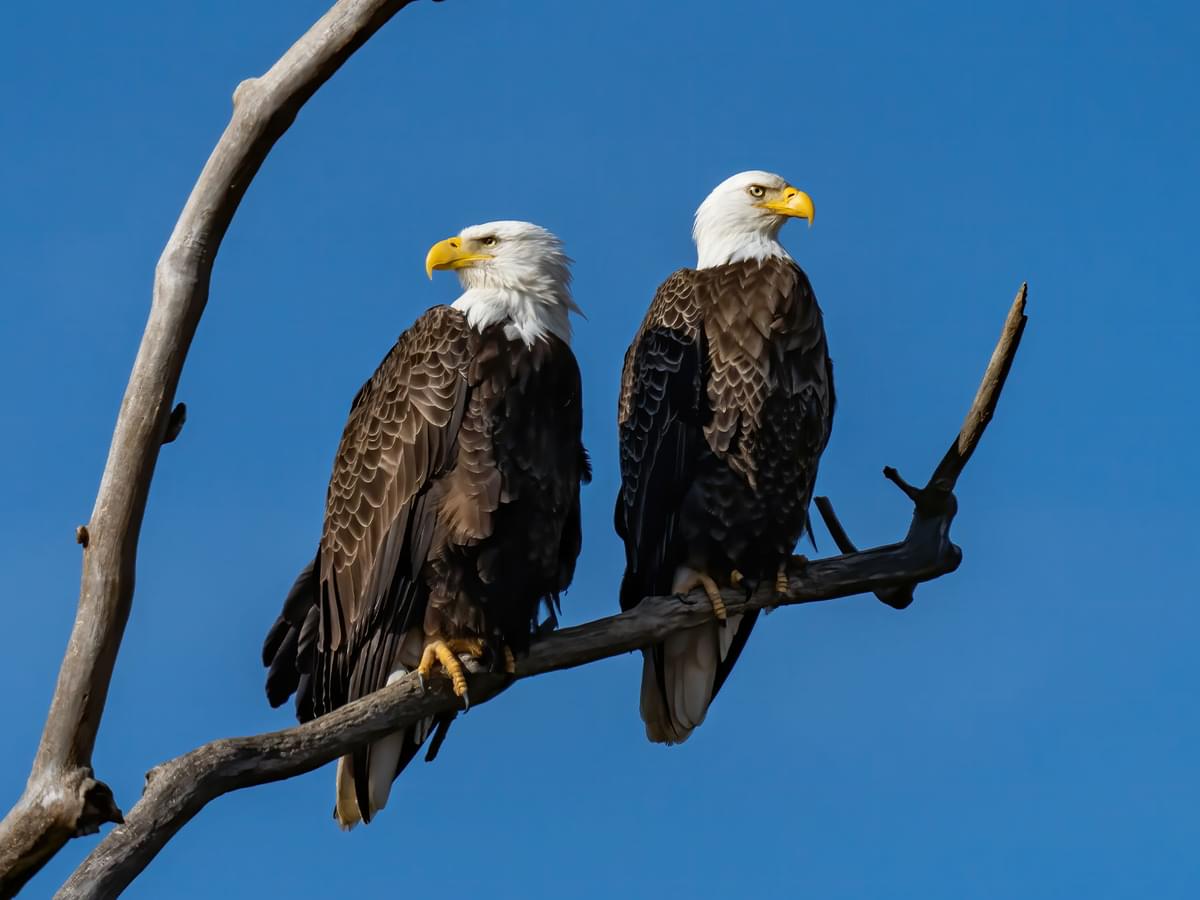Feeding Behaviors

There are roughly ten thousand bird species on earth, all with their own particular diet and feeding behaviors. They range from specialized feeders associated with specific plant species to opportunistic generalists equipped to eat just about anything!
In this guide, we’ll delve into the fascinating world of bird feeding behaviors. Read along with us to learn what birds eat and how they find their food.

Pictured: An American Flamingo. Flamingos are filter-feeders and dine on algae and tiny invertebrates in the water
Overview of Bird Feeding Behaviors
Birds have evolved to take advantage of practically every food source available in terrestrial, aerial, aquatic, and marine environments. Studying their diets is not only fascinating but also helps us understand birds’ roles in ecosystems and their effects on our own food production systems.
Various factors have shaped each bird into the species we know today, and feeding behaviors are among the most important.
Available food resources, the physiological and behavioral adaptations required to access them, and competition with other species that would also like a ‘slice of the pie’ are major drivers of evolution.
Why Study Bird Feeding Behaviors?
We need to understand birds’ diet and feeding behaviors to conserve their habitats and the species they rely on. However, understanding bird feeding behavior is vital not only for conserving birds but also for the ecosystems they live in.
Birds perform important ecological roles as predators, prey, pollinators, and ecosystem engineers. They are so completely entwined that their disappearance can have disastrous knock-on effects on other species.

Pictured: A Red-breasted Sapsucker drilling for sap
Understanding Bird Feeding Behaviors
Defining Feeding Behaviors
From Woodpeckers that harvest tree sap and drill into decaying wood to filter-feeding Flamingos that dine on algae and tiny invertebrates in the water, birds employ countless feeding behaviors. Some migrate thousands of miles each year to reach distant foraging grounds, while others store food and hunker down to survive tough winters.
Avians can generally be defined as hunters, foragers, or opportunistic feeders. They can also be defined by what they eat (granivorous, piscivorous, frugivorous, etc.), where they forage (terrestrial, marine, aerial, etc.), and the time they feed ( diurnal, nocturnal, crepuscular, tidal, etc.).
Adaptations for Feeding
Birds have evolved into myriad shapes and sizes to survive out in the wild. From stilt-like legs to webbed feet, and hawk eyes to pinpoint hearing, various birds have developed amazing ‘superpowers’ to help them get a meal. However, their bills are perhaps the most specialized tools for feeding.
Continue reading to learn about some common bird bill shapes and how they are used.
Hooked bills
Hooked bills are typical of raptors that use their sharp beaks to tear flesh from their prey. However, Parrots and other birds from their family use their large, hooked bills to climb and feed on nuts and fruits.
Spear-shaped bills
Spear-shaped bills are typical of Terns, Herons, Kingfishers, and other birds that spear fish and other prey. Woodpeckers use their spear-shaped bills as chisels to peck away at wood in search of prey or to excavate nesting and roosting cavities.
Conical bills
Birds like Finches, Siskins, Cardinals, and Sparrows have robust, conical bills for feeding on grass seeds or extracting nuts and seeds from tough fruits and berries. These stout bills are ideal for crushing seeds and removing husks.
Fine, pointed bills
Songbirds like Warblers and Robins that glean insects from vegetation and the ground tend to have relatively fine, pointed bills. Theft do not need heavy bills to crush their delicate prey, and a fine point allows them to snatch small insects with precision.
Wide, pointed Bills
However, not all insect-eating birds catch their food in the same way. Aerial insect eaters like Flycatchers, Swallows, Swifts, and Nightjars have relatively wide bill bases to increase their chances of a successful catch.

Nightjars are aerial insect eaters. They have relatively wide bill bases to increase their chances of a successful catch
Types of Feeding Behaviors
Foraging Techniques
Birds have evolved to find their prey in all sorts of different environments. Let’s take a look at some major foraging techniques.
Ground feeding
From insects and small animals to seeds and other plant material, the ground is a great place to look for food. A huge variety of bird species find their food on the ground, including shorebirds, many songbirds, gamebirds, and most birds of prey.
Aerial feeding
Aerial feeding requires some pretty specialized abilities, including speed and agility. The open-air is the domain of flying invertebrates and other birds, so birds that forage here are true carnivores.
Typical examples of aerial feeders are Swallows, Swifts, and Martins, which feed on flying insects, and Falcons, which feed on flying birds and bats.
Water-based feeding
Fresh, brackish, and saltwater environments provide rich feeding opportunities for birds of all sizes and shapes. Birds like Gannets dive into the water, while Penguins dive down deep, and Ospreys and Terns catch their food up near the surface.
Of course, aquatic habitats also support plant life, and many birds, like waterfowl and Coots, feed on vegetation at or beneath the surface.

Pictured: An Osprey catching a brown trout. Ospreys and Terns catch their food up near the waters surface
Dietary Preferences
Birds can be broadly classified as herbivores, carnivores, and omnivores.
Continue reading for a brief breakdown of each.
Herbivorous birds
Herbivorous birds are species that feed predominantly on plant material, and they may specialize in various plant parts.
Granivores (Finches, Doves, etc.), for example, feed on seeds, while frugivores (Waxwings, Toucans, and some Parrots) are birds that feed on fruits.
Large birds like Geese may feed on energy-poor grass, while small species like Hummingbirds and Sunbirds are specialized nectar feeders that pollinate the flowers they visit.
Carnivorous birds
Carnivorous birds include insect eaters that find their food on the ground, among vegetation, or in the air. Fish and other aquatic animals are the major food source for seabirds and many freshwater species too.
The ultimate carnivores of the bird world are the raptors and owls that specialize in hunting live prey using their keen eyesight, hooked bills, and powerful talons. However, not all carnivores catch their own prey.
Vultures, crows, and other scavengers rely on the leftovers from other predators or the carcasses of animals that have died from natural causes.
Omnivorous birds
Many birds are more opportunistic in nature and happily feed on both plant and animal foods. These generalists are less specialized for a specific food source and can capitalize on whatever food is available.
Food availability often changes with the seasons, and some birds will focus on insects during the warmer months but switch to seeds and nuts in the winter when animal foods are scarce.

Pictured: A Chestnut Mandibled Toucan feeding on a guava fruit
Specialized Feeding Behaviors
Tool Use in Feeding
Although generally rare, several species of birds are known to use tools for feeding and accessing their food.
Crows are generally accepted as the world’s most intelligent birds, and several species are known to use tools to access food in inaccessible nooks and crannies. They are not the only birds that fashion and use tools, however. The Woodpecker Finch of the Galapagos Islands uses thorns in much the same way to impale its prey in cavities.
Birds don’t necessarily need to manipulate tools to access food. Some, like the Bearded Vulture, Ravens, and Gulls, will drop tough food and prey like bones and shellfish, and Golden Eagles will even drop tortoises to access the meal within. Egyptian Vultures have been demonstrated to go one step further and throw rocks at Ostrich eggs to crack their shells.
Cooperative Feeding
Most birds focus solely on feeding themselves, although many will feed their partner during courtship and nesting, and all birds that produce helpless altricial chicks must feed their young until they fledge and gain independence.
However, there are some examples of birds that work together to procure their food. This behavior is seen in flocks of Pelicans that herd fish into a tight school or corner them in the shallows and in Acorn Woodpeckers that gather and store food communally to see their group through the winter.

Pictured: An Egyptian Vulture using a stone to crack open an egg
Human Influence on Bird Feeding Behaviors
Bird Feeding: Do's and Don'ts
Bird feeding is hugely popular, and it's easy to see the appeal. Bird watchers can enjoy observing their favorite birds and their feeding behaviors while feeling they are doing their part to help their feathered friends. However, feeding birds can do more harm than good if done irresponsibly.
Follow these general guidelines to keep local birds healthy.
- Growing native fruit, seed, and nectar-producing plants is preferable to putting out birdseed. You can provide natural feeding, nesting, and roosting opportunities for a much greater variety of bird species this way.
- Provide only fresh, natural foods that have not been contaminated with pesticides or any harmful chemicals.
- Clean and disinfect your feeders regularly. Birds may carry infectious diseases that spread easily to other birds that perch and feed from the same spot.
- Only feed birds in urban areas. Avoid altering the natural behaviors of birds in parks, reserves, and wilderness areas.
- Feed birds irregularly for most of the year to limit their dependence and encourage natural foraging behaviors.
Urban Adaptations
Birds in urban areas survive in a habitat with limited natural resources, and they rely heavily on our scraps and feeders.
Species like Feral Pigeons and House Sparrows even live and breed in areas with very little vegetation by scavenging around restaurants and trash collection sites, and they frequent areas where humans provide food.
Even in well-wooded suburbs, birds know to look out for feeders, and a steady supply of easy food allows many species to thrive in these strange new environments.

Pictured: House Sparrows feeding from a seed tube
Summary
Birds have evolved a fascinating array of feeding behaviors to survive in habitats worldwide, and their diet is one of the major drivers of their size and appearance. Their feeding behavior is more than just an interesting subject, it’s also a crucial field for biologists and conservationists working to safeguard the future of the world’s birds.
Hopefully, this overview of bird feeding behavior will enrich your own study of birds, either in your own backyard or elsewhere. As a fun exercise, pay attention to the bill shape of the next bird you see. You can probably tell a lot about its diet simply by the shape of its beak!



